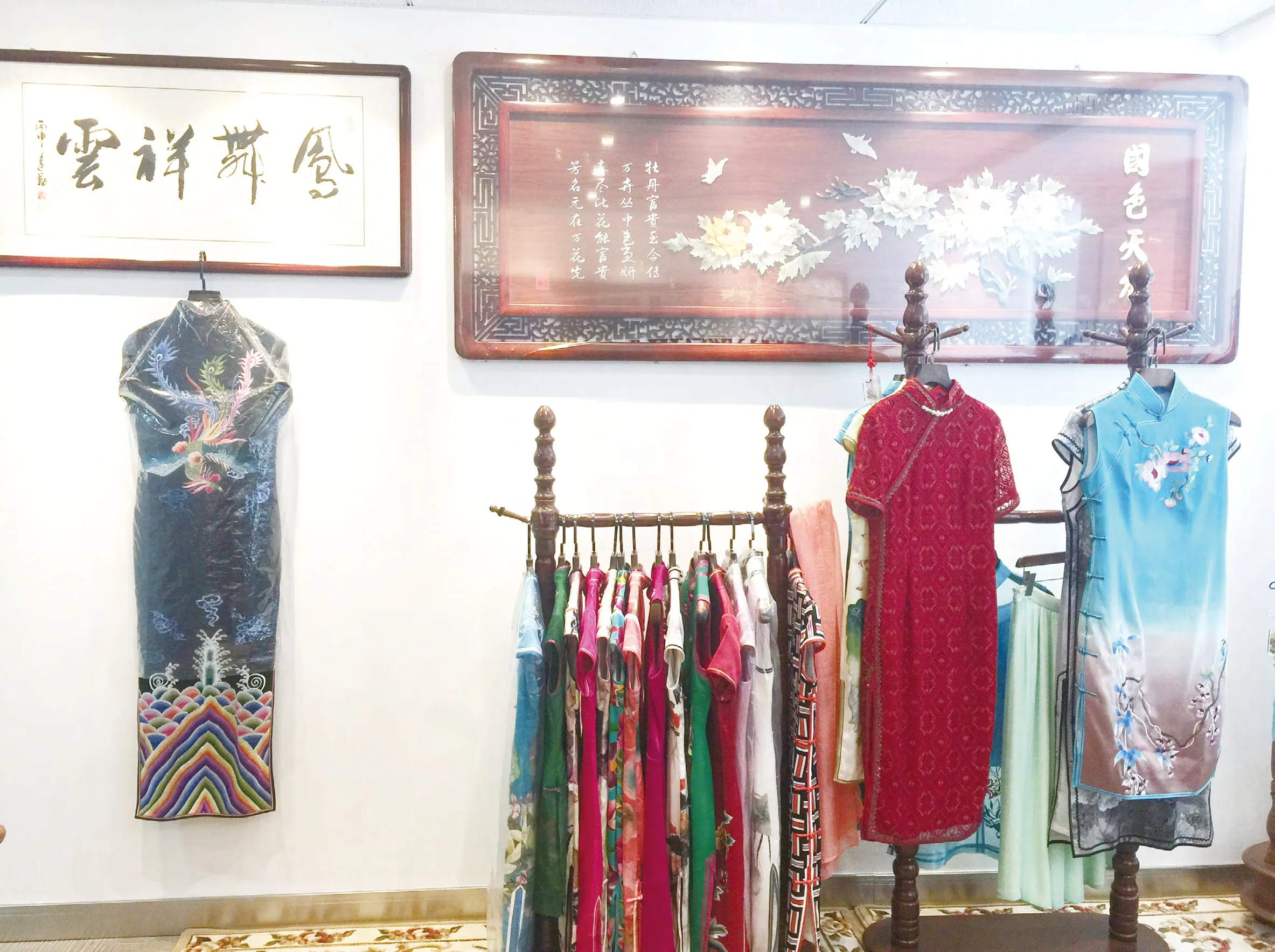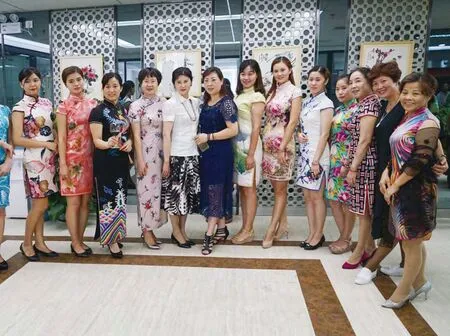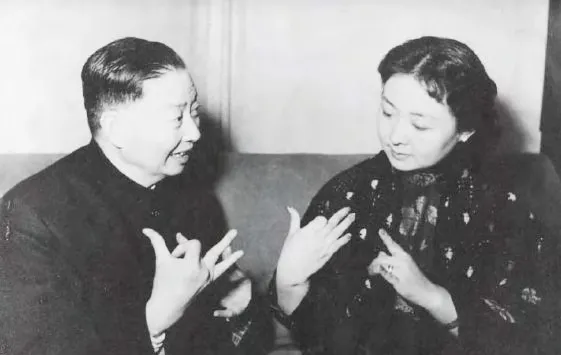Wuhan-style Cheongsam,A Testimony to History and Dream
2017-10-10ByLiuZhaoweiYangZhiqi
By Liu Zhaowei, Yang Zhiqi
Wuhan-style Cheongsam,A Testimony to History and Dream
By Liu Zhaowei, Yang Zhiqi
“In the depth of each Chinese woman’s heart, wearing cheongsam is one of their life dreams no matter how tall or short,slender or plump she is,” said Chen Wenxiu, with the sweet shyness in her sparkling eyes.
Though she has reached grandmother-age, Chen Wenxiu charms us with her smooth skin, a tender voice, and elegant manners in her gestures and facial expressions. I suddenly had the illusion that she had bypassed the hourglass to suspend the passage of time, thus retaining her youth forever.
Chen Wenxiu, a major in mechanical drawing, has never received any fashion trainning. She almost taught herself in designing and making cheongsam, with a passionate love for it. She initiated a cheongsam shop named “Xiujue” on the tranquil Nanjing Road in Wuhan. The name is dainty and refreshing, the decor minimal but exquisite, producing a vintage and nostalgic flavor.Walking inside, you’ll be immediately fasinated by the lovely cheongsams on shelves: the wedding cheongsam embroidered with red peony and rose flowers, the simple and elegant cheongsam designed with blue and white porcelain patterns and modern and stylish versions...... Apparently she knows every cheongsam in heart as if each piece contains an intriguing story to us.
“Cheongsam” (qípáo) is a phrase full of historic and cultural emotions.It is also an embodiment of a longstanding culture and of the bygone tradition.

“每个女人心底,都有一个旗袍梦。这个梦,无关高矮,无关胖瘦。”说这话的时候,陈文秀的眼里透着一股小女人的娇羞。
虽然她已经到了抱孙子的年纪,但她肤质细腻,话语温柔,举手投足间都有着一种雅致的气质。那一刻,我仿佛觉得她绕过了时光的沙漏,永远定格在少女时期。
学机械制图出身的陈文秀没有学过一天服装,仅凭着一腔对旗袍的偏执热爱自学成才。在幽静的武汉南京路,她开了一家名为“秀觉”的旗袍店。清丽的店名,小却精致的装帧,显得古香古色。走进店中,一件件旗袍瞬间吸引了人们的眼球,有勾勒着大红牡丹玫瑰的婚嫁旗袍,有古典青花瓷纹的素净旗袍,还有现代风的时尚旗袍……她如数家珍般一件件向我们展示,仿佛讲述着一个个欲说还休的故事。
旗袍,两个蕴含着丰富历史、文化与情感的字眼,承载着悠久的传统文化,成为历史的印记——
京派的旗袍受宫廷影响,束领高而硬,开衩低,较为保守;又因皇城富庶,旗袍面料往往鲜艳夺目,显得大气隆重。
海派旗袍深受西方文化影响,略显“风骚”:绣花艳而散,开衩高,领低,袖短,尽显性感浪漫风情,让人仿佛能想象当时的交际花们手拿小巧酒杯,或翩翩于灯火舞台,或游离于宾客之间的情形……
而彼时的大汉口,因辛亥革命一声枪响,女性的穿戴也出现斗转星移的一幕。武汉女性迅速成为旗袍的拥趸。首义之城捕捉时尚的敏锐感仅次于上海。民国著名的宋氏姐妹,对旗袍也情有独钟,但宋庆龄开始尝试穿着旗袍,则是在1926~1927年来武汉从事革命工作期间。
“国母”对旗袍的偏爱让民国的上流名媛纷纷效仿,而汉派旗袍席卷民间,从学生到女工都开始穿旗袍,自然离不开“明星效应”。

Beijing-style cheongsam,
in fluenced by the imperial court, was much more conservative, with high,stiff necks and short slits. Seemingly contradicting, due to the abundance of wealth in the imperial city, fabrics of Beijing-style cheongsam were usually bright-colored, looking formal and grand.
However,Shanghai-style cheongsam was more westernized and “seductive”: the embroidery was gorgeous and scattered, the slits higher, necks lower, and sleeves shorter to accentuate a woman’s attractiveness and beauty. We can easily conjure up a picture of those party courtesans holding a small wine cup in hand, dancing on the stage, or butter flying among her guests...
In metropolitan Wuhan, the gunshot of the Revolution of 1911 also signaled a revolution in women’s garments. Women in Wuhan quickly became fans of cheongsam. Wuhan was second only to Shanghai towards changing trends of fashion. During the early decades of last century, the famous Soong sisters showed special preference for cheongsam. It is worth noting that it was during her sojourn in Wuhan from 1926 to 1927 for revolutionary work that Soong Chingling began to wear her cheongsam.
The First Lady turned out to be a trendsetter: ladies and courtesans from the upper class rushed to emulate her. Wuhan-style cheongsam was naturally a product of that trend.All women in all walks of life including girl students and factory workers were zest in wearing cheongsam. Such is the example of celebrity endorsement.
Chen Bohua, a Han Opera master,later became the director of Wuhan Opera Theatre, was known as her stage name “Little Peony” among audiences all over Wuhan. In 1937,when the Peking Opera master Mei Lanfang was invited for performances in Wuhan, a welcome banquet was held in his honor. Sitting beside gentle Mei Lanfang, Chen Bohua, a representative of local artists, wore an impressive honey gold cheongsam with a light green waistcoat and a white silk scarf, appearing re fined and bewitching.

● In 1957, Chen Bohua and Mei Lanfang were exchanging their opinions on opera performance1957年,陈伯华与梅兰芳研究表演艺术
It was the first gathering of two“Consort Yu1” actresses Chen Bohua and Mei Lanfang, who made such a perfect match that their meeting became a popular topic among the locals.
Wuhan, a thoroughfare to nine provinces, has been steeped in different cultures and has cultivated an all-inclusive spirit. The same went with Wuhan-style cheongsam, which readily embraced many changes and revisions: from straight and loose in style to a more fitting and revealing cut; from low neck to high neck—as high as the ears in winter; with waist more fitting, and the bell-like sleeves shorter and tighter, from the length of calves to longer styles. The slits were even more capricious, sometimes as high as the hip.
Wuhan women are known for their boldness and tomboyish manners. Older people reminisced that a Wuhan woman at that time could wear her high-slit cheongsam on a bus, with her legs crossed and shaking. But Chen Wenxiu had her own idea, “once you wear cheongsam you feel more modest and graceful,and will be constantly reminding yourself to keep that grace both inside and outside.” Perhaps that is what she really wants from cheongsam.
Just like Eileen Chang, a fan of cheongsam,who often digressed to descriptions of these garments in her novels, Chen Wenxiu is as almost stubbornly fond of cheongsam.Stand-up collars, Chinese frogs, aslant front, embroidered border......Chen Wenxiu seems to know cheongsam inside and out.

●Note:1 Consort Yu was a favorite concubine of Xiang Yu, King of the West Chu during the War of Chu and Han period. Later, this female role is often portrayed in traditional Chinese Operas.
“Even when you are far away from home, don’t forget to put a cheongsam in your suitcase to make Chinese culture better known in the outside world.” Chen Wenxiu told us. It is hard to decide whether it is women who are interpreters of cheongsam’s charm, or the other way around.But it is always certain that there are many women who are crazily in love with cheongsam. In the whole city of Wuhan there are many other individuals like Chen Wenxiu, who are inheriting the cheongsam culture and keeping the flame of Wuhan’s history and dream alive.
汉剧大师陈伯华(后任武汉汉剧院院长)曾以“小牡丹花”的艺名名噪武汉三镇。1937年,京剧大师梅兰芳来汉演出。欢迎宴会上,彬彬有礼的梅兰芳先生一旁,作为武汉演员代表的陈伯华一袭色彩鲜艳的蜜黄色旗袍,着淡青色坎肩,项上束白绸围巾,显得既清丽又妩媚。
这是陈伯华与梅兰芳两位虞姬(注:虞姬,是秦末楚汉相争时期西楚霸王项羽的爱妾,也是中国戏曲表演中经典角色之一)首次会面。众人看了梅兰芳,再看陈伯华,无不啧叹,成就一段佳话。
地处九省通衢的武汉,早已有了开放包容的气度,汉派旗袍也因此一度大放异彩,各种改良版层出不穷:从清汤挂面到曲线尽显;领子先低后高,冬款可以高到耳部;削减了腰身,宽大的喇叭袖渐渐缩短收窄;长度也先至小腿,后流行长款,开叉更是高高低低,一度曾高到臀部。
武汉女人素来有豪情。有过来人回忆,当时的武汉女人可以装着高开叉的旗袍,坐在公交车上,跷着腿还要抖三抖。但陈文秀并不这样认为。正如她所说:“换上旗袍,本身就多了柔美温婉的感觉,这样的装扮也在时时提醒自己,要注意内外兼修。”这或许就是旗袍于她的最大意义。
亦如张爱玲喜爱旗袍,便将其成为张氏小说中出镜率最高的物品。陈文秀对旗袍的喜爱,也达到近乎偏执的程度。立领、盘扣、斜襟、滚边……对于旗袍的每个细节,陈文秀都了如指掌。
“无论是在异国还是他乡,如果能在箱子里备上一件旗袍,将中国的文化传播出去,也是好的。”临别时,陈文秀叮嘱我们。说不清是女人诠释了旗袍的韵致,还是旗袍衬托了女人的风情。不管怎样,总有那么多女人是爱旗袍的,如痴如醉。在武汉三镇,或许还有许多这样的人,默默传承着旗袍文化,承载着汉派独有的历史与梦。
汉派旗袍承载历史与梦
文|刘昭玮 杨芷琪
